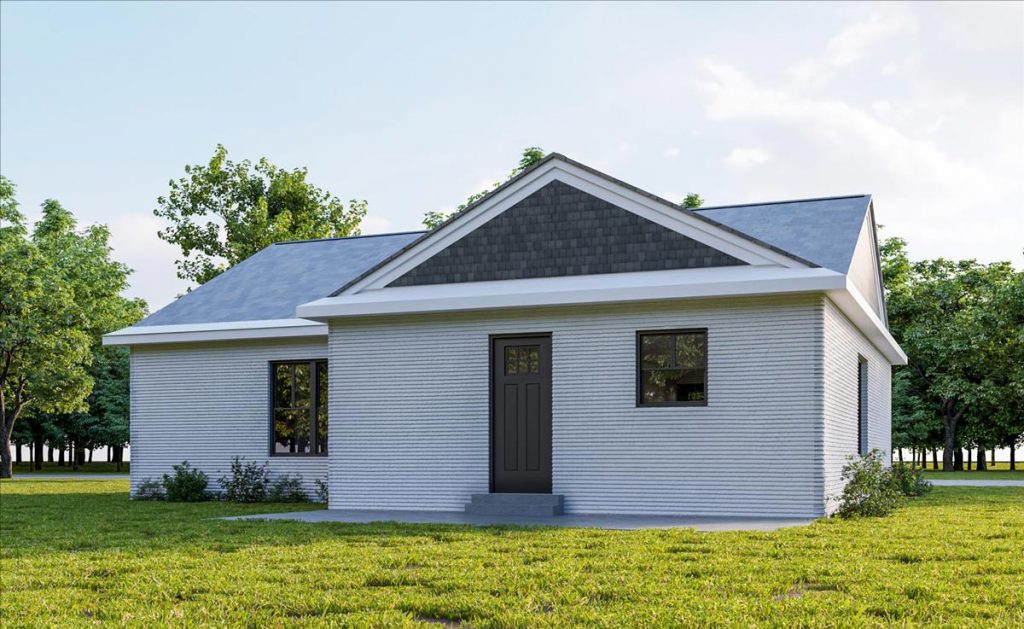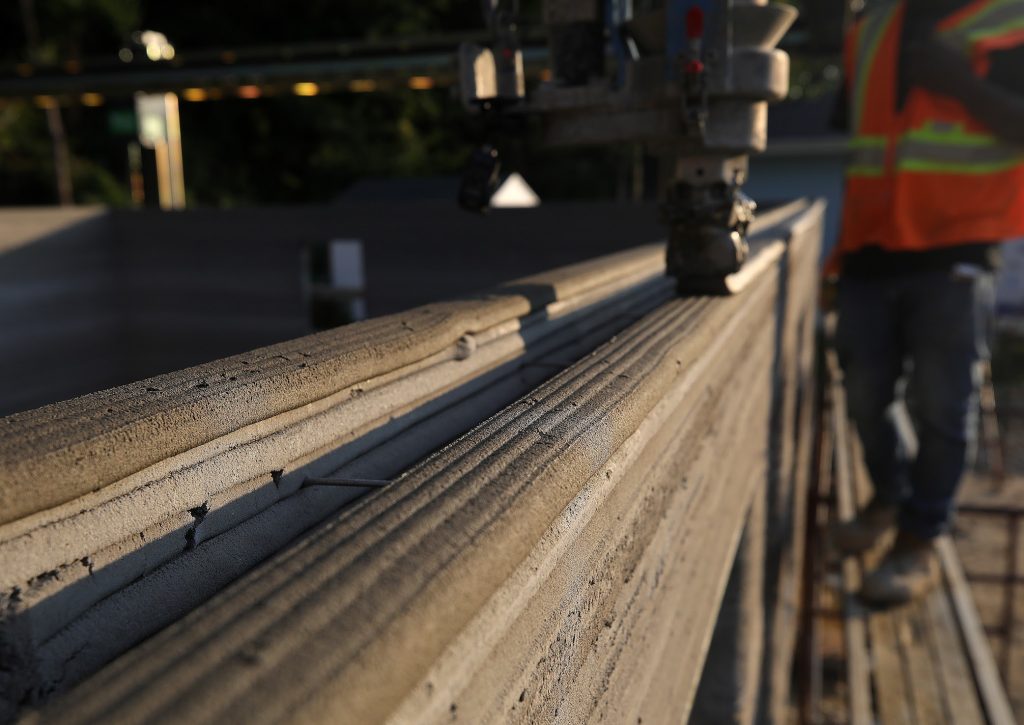Construction 3D printer manufacturer COBOD’s systems have been deployed to create three new low-cost homes for those living in the rural United States.
Built by Alquist3D, the PERI Group and Printed Farms Florida, the properties are designed to be more robust than conventional housing, while also being faster and cheaper to construct. With the homes benefiting from a mixture of state-backing and non-profit Habitat for Humanity support, each has been erected to showcase 3D printing’s potential for improving social housing accessibility across the USA.
“We are excited to partner with Habitat for Humanity on this project,” said Alquist3D CEO Zachary Mannheimer. “Using 3D printing allows us to speed up the construction of a home while also lowering building cost, solving two housing challenges at once: the rising price of new homes and the speed at which they are built.”
“Both of our organizations are aiming to build affordable housing and hopefully this project will be one of many we do together in the future.”

Unleashing the ‘BOD2’
Since being founded by Danish reseller and service provider 3D Printhuset, COBOD has become one of the best-established names in the construction 3D printing industry. The firm first showcased its large-format printing expertise in 2017, when it laid claim to having built the first habitable 3D printed building in Copenhagen, which it constructed with its proprietary Building on Demand or ‘BOD’ technology.
The next year, COBOD launched the ‘BOD2,’ an upgraded version of its gantry-mounted platform. Now marketed by the firm in three different specifications, each version of the printer features 2.5 meter modules which can be stacked onto its three axes. At its maximum capacity, the system is capable of producing multi-storey structures, with floors up to 12m in width, 27m in length and 9m in height.
Leveraging these capabilities, the BOD2 has been deployed by the likes of GE Renewable Energy and LafargeHolcim to build a record-tall wind turbine tower, 14Trees to 3D print a Malawian school and PERI to construct a German apartment building, but with COBOD’s latest home building projects, its Founder Henrik Lund-Nielsen is now hoping that it can effectively break into the US market.
“Our printers have now printed buildings in three different US states, more than anybody else,” said Lund-Nielsen. “As we have sold more 3D printers to new North American customers since, we expect to continue setting new records in the US, such that we become as prevalent on the North American market as we are in Europe with our printers and technology.”
“We are very delighted that we and our growing US customer base, despite COVID-19, have been able to make significant progress and projects with our technology.”

Building a ‘Habitat for Humanity’
Established in 1976, Habitat for Humanity is a US-based Christian group that’s committed to helping the needy in 70 countries around the world find somewhere decent to live. While the non-profit’s activities vary from outreach programs to disaster response efforts, it has also formed a partnership with BOD2-packing firms in which it has sought to showcase 3D printing’s low-cost house building efficacy.
One such project has seen COBOD’s partner and shareholder PERI follow up on the plans to 3D print affordable housing it unveiled earlier this year. Designed by Candelaria Design Associates, and sited in the rural Southern United States, the firm has built a single-storey home with some 1,740 sq. ft of living space, which is now ready to be occupied by a Habitat-chosen family in need.
Following on from the success of PERI’s build in Tempe, Habitat for Humanity has also worked with Alquist3D to construct another affordable home elsewhere in Arizona, out in Williamsburg. Built slightly smaller at 1,200 sq. ft, the cosier 3D printed home still has space to squeeze in 3 bedrooms and 2 full bathrooms, making it more than large enough to further Habitat’s social housing mission.
The cost-accessible Habitat for Humanity home represents Alquist3D’s second in the US since getting hold of a COBOD 3D printer. The first was actually erected alongside Virginia Tech University with backing from the Virginia Housing authority, and despite being built near the city of Richmond, the firm says that the project is really meant to exhibit the benefits of 3D printing houses in rural areas.
“While most 3D printing endeavors focus on urban residential areas, many of the regions facing the biggest housing challenges exist in rural America,” added Mannheimer. “That is why we partnered with Virginia Housing and Virginia Tech to build homes for people who live outside of the places where most funding for housing programs is spent.”

Printing habitable Floridian homes
In a similar social housing application, COBOD’s first US customer, Printed Farms Florida, has also announced the completion of its second 3D printed building. Having already signed-off on a 784 sq. ft rebar-reinforced storage unit during February 2021, the company has now deployed the BOD2 once again, only this time to build what is said to be Florida’s first ever 3D printed residential home.
Much like that built by Alquist3D, the Tallahassee-based 1,440 sq. ft structure has 3 bedrooms and 2 full bathrooms, and is designed for long term occupation. When building the structure’s walls, the company is said to have not just made durability and efficiency gains, but identified ways of optimizing other areas of house building too, such as placing doors and windows in a fashion that made wiring easier.
Similarly to Alquist3D’s project, the building was also erected with state backing, as it was built alongside Precision Building & Renovating, a company which funded the project via the City of Tallahassee’s Affordable Housing Construction Loan program.
According to Precision Building & Renovating’s COO James Light, the program has already proven the durability benefits of 3D printing homes in rural areas. “The finished product is far superior in strength, durability, and efficiency,” explained Light. “These homes are not only more efficient to construct, but they also carry less maintenance cost. Wood breaks and wood rots, especially here in the South.”
To stay up to date with the latest 3D printing news, don’t forget to subscribe to the 3D Printing Industry newsletter or follow us on Twitter or liking our page on Facebook.
For a deeper dive into additive manufacturing, you can now subscribe to our Youtube channel, featuring discussion, debriefs, and shots of 3D printing in-action.
Are you looking for a job in the additive manufacturing industry? Visit 3D Printing Jobs for a selection of roles in the industry.
Featured image shows a rendering of Alquist3D and Habitat for Humanity’s 3D printed home in Williamsburg. Image via COBOD.



